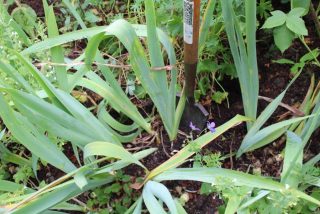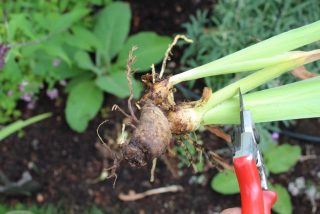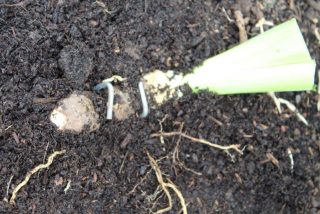Splitting Iris Germanica
German irises need to be split every three to five years to stop them encroaching on other plants.

The irises are split after they finish flowering between June and August. Unlike other plants, they can withstand division and transplantation in dry conditions. However, they need to be given enough time to put down roots before the winter.

Individual rhizomes can be removed from the main plant to reduce the size of the clump.

Alternatively, the whole clump can be dug up and the rhizomes divided using two forks. This however risks losing a flowering season as replanted rhizomes rarely flower in their first year. The first method will by contrast enable the remaining rhizomes to keep flowering. Once the rhizomes have been isolated, their leaves are trimmed off to minimise strain on the plant, and they are re-planted.
In England’s mild and humid climate, it is advisable to plant rhizomes on the surface of the soil to prevent rotting. Pinning them down with tent pegs anchors them in place until their roots have grown.



